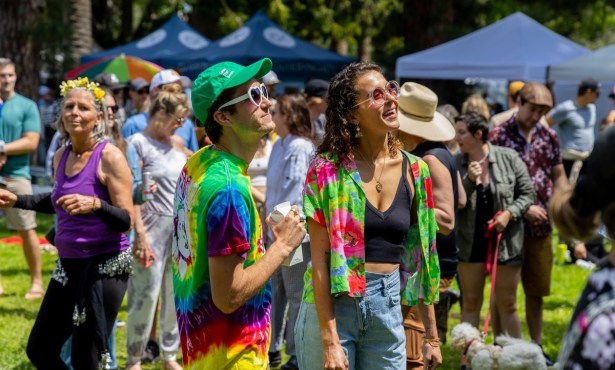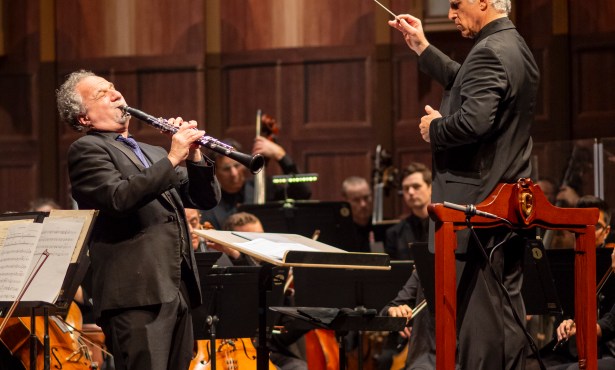Mural Expert Scott Haskins on Ortega Park Art Conservation
Experienced Mural Conservator Scott Haskins Considers Options for Ortega Park Art

In order to preserve the murals in Ortega Park, it may be necessary to remove and store them during the upcoming construction. On Tuesday, July 6, Scott Haskins, of Fine Art Conservation Laboratories in Santa Barbara, met with Mark Alvarado, a former city employee and the community organizer behind One Community Bridge Project, the group responsible for the movement to preserve the 18 historic murals on and around the buildings in Ortega Park. This meeting, which came about in part as a result of several months’ worth of exchanges between Haskins and Justin Van Mullem, associate planner with the city’s Parks and Recreation Project Management team, represents the introduction of a new level of expertise in the conservation, transport, and storage of fine art murals into the at times heated public discussions over the fate of the public art in Ortega Park.
On Tuesday, just prior to his meeting with Alvarado, Haskins offered the following observations about the situation and what he and his company could potentially bring to the project. Haskins, as many followers of the Santa Barbara art scene will recall, was the lead conservator of the project that transported “A Portrait of Mexico Today” from the Bloomingdale estate in Pacific Palisades to the front steps of the Santa Barbara Museum of Art, where it has been on permanent round-the-clock display to the public since 2002.
At this stage, Haskins said that he and Alvarado would only be talking about the three large works on the exterior walls of the park’s public restrooms. The artist, Manuel Unzueta, has resisted the idea of recreating his murals somewhere else. Once the disposition of those murals has been determined, it’s possible that the other 15 works may be included in the potential restoration project.
Sign up for Indy Today to receive fresh news from Independent.com, in your inbox, every morning.
As Haskins understands it, the murals are the property of the City of Santa Barbara at this time. He emphasized the importance of distinguishing among different types of value when discussing public art. The appraisal of public art, Haskins said, requires a different approach than that of pricing other forms of fine art. “The value of public art extends beyond what it can be sold for,” Haskins said. For a proper appraisal of any work of public art, Haskins said, the most important thing to take into account is “what purpose the work can serve in the future.”
Having just returned from finishing a similar project involving a 30-foot mural in Austin, Texas, Haskins expressed confidence that the works in Ortega Park could not only be conserved effectively, but that they could also be stored locally for however long it takes to complete the construction project without any loss of integrity.
In response to a question about the notion that murals are by nature temporary works, and that they should be replaced on a schedule, Haskins expressed sincere doubt. “The idea that murals are only supposed to last 10 years — that’s ignorant,” he said. “The first project I ever worked on was in Italy, and the mural we preserved there was created in 1365.”
As for the question of whether or not the work in Ortega Park is of significant aesthetic value — enough to justify the expense of preservation — Haskins offered this: “My short answer? Yes.”
Support the Santa Barbara Independent through a long-term or a single contribution.



